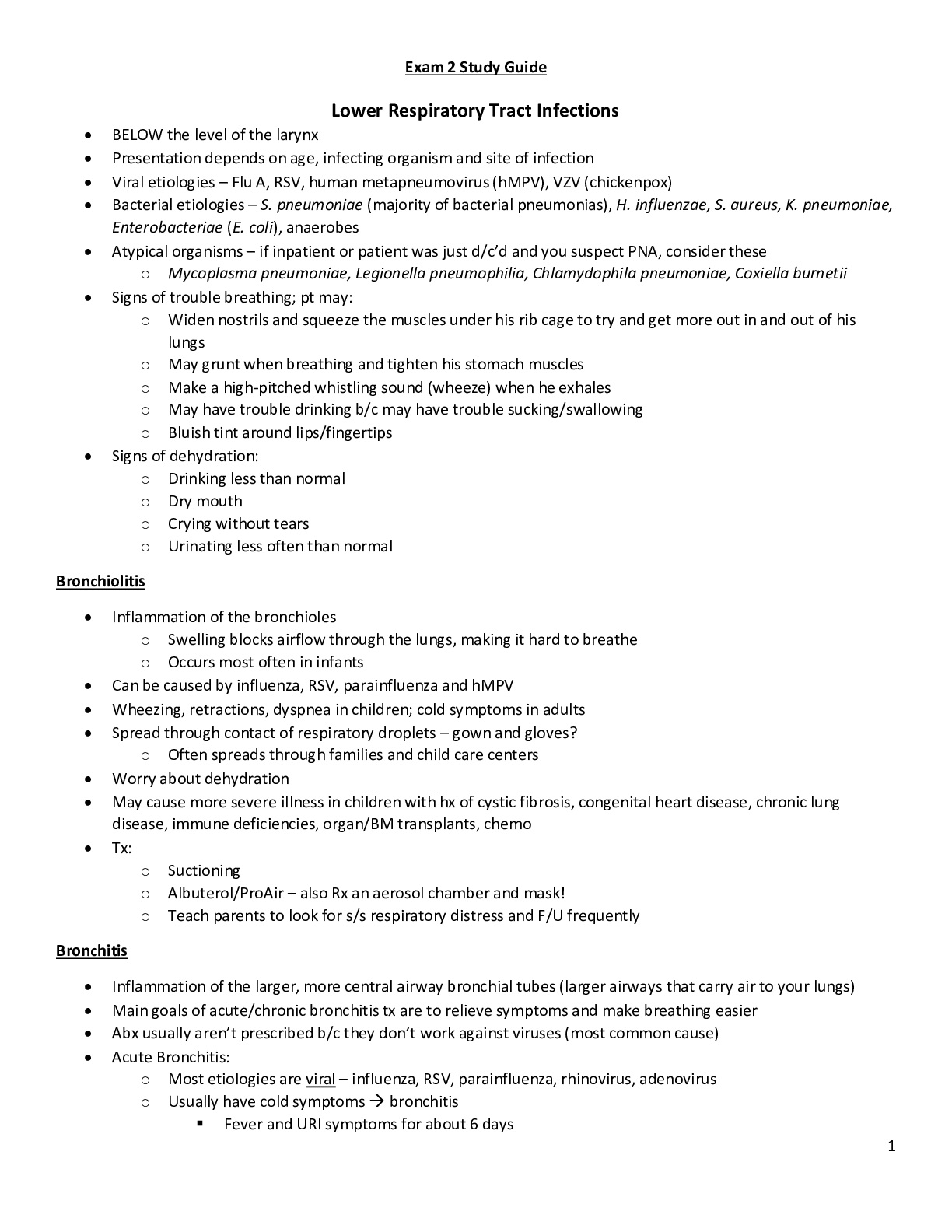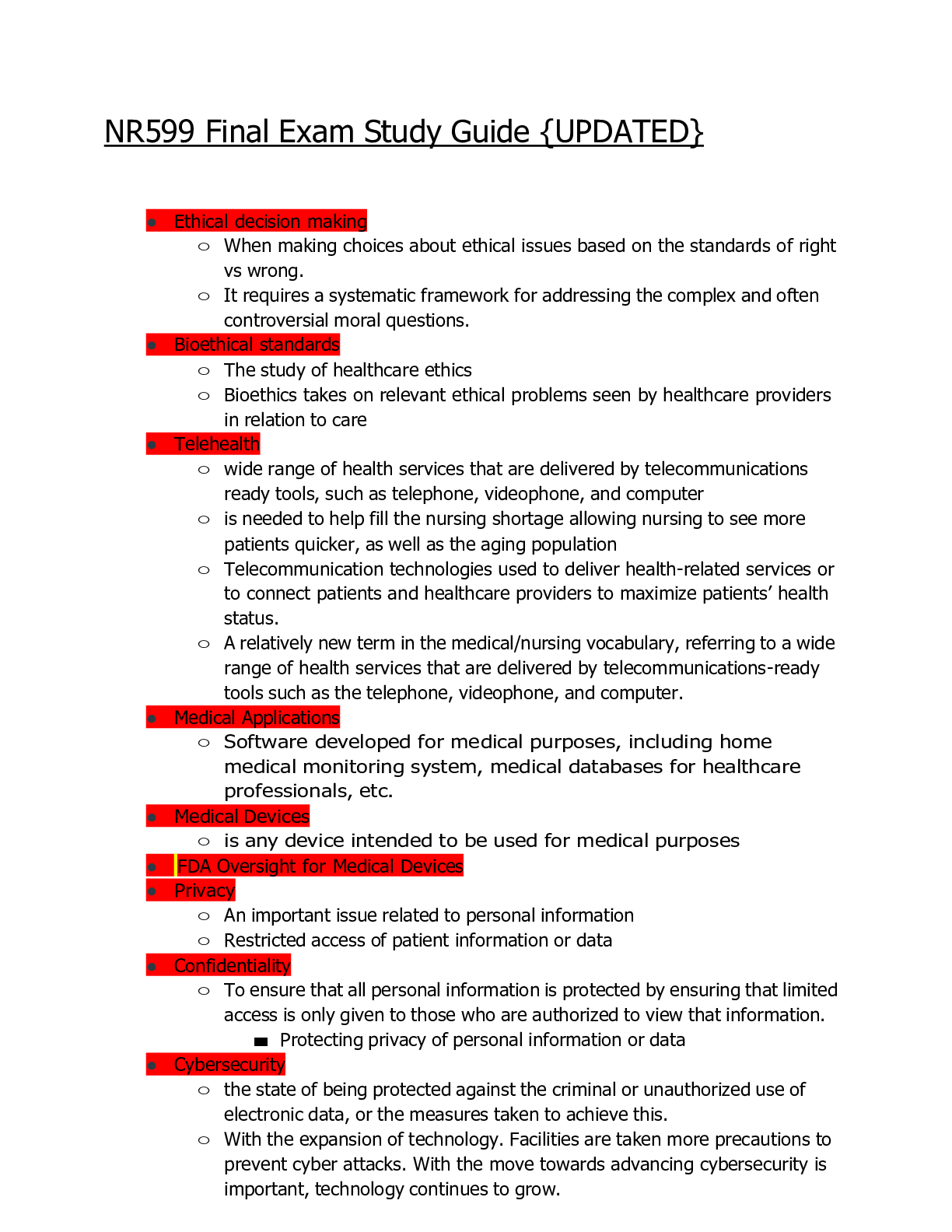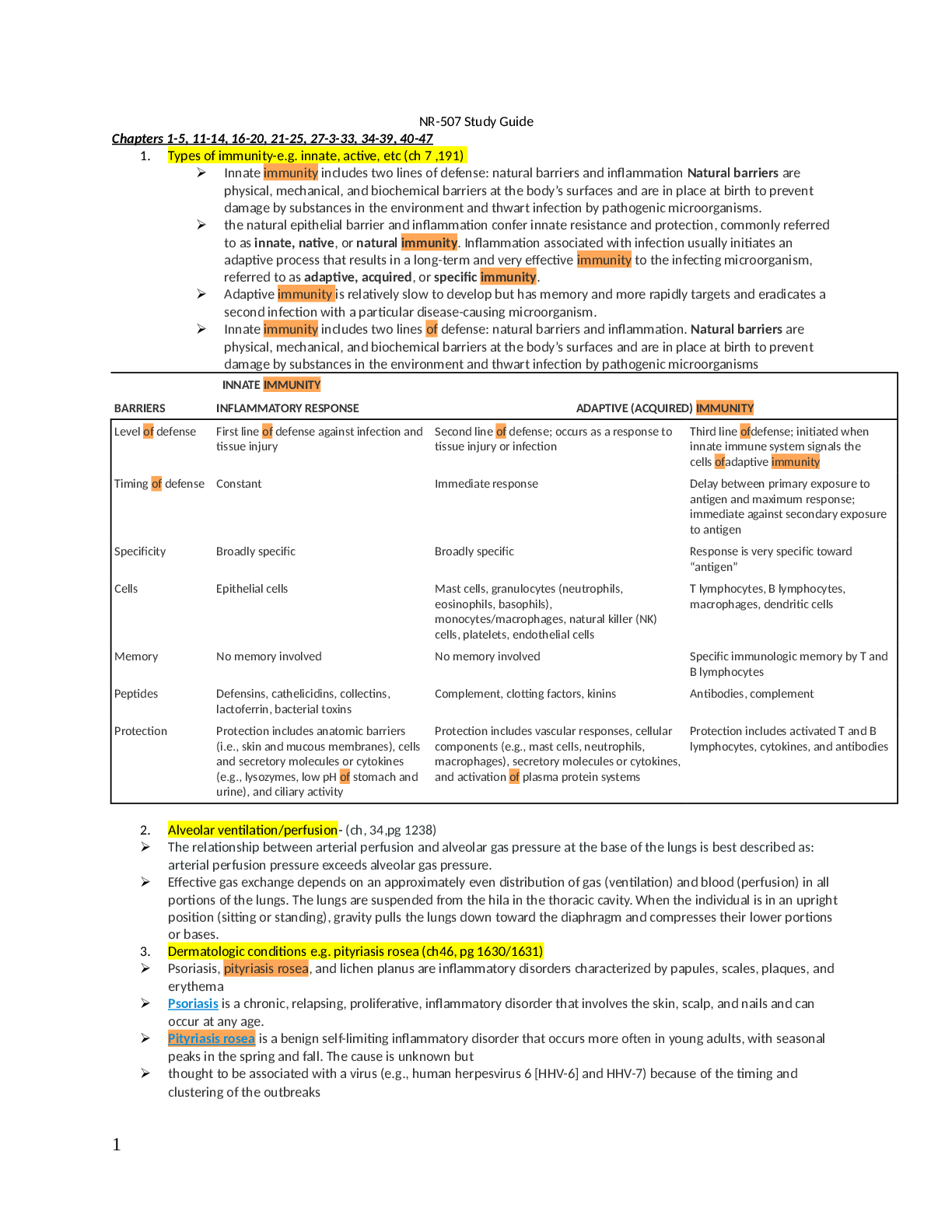Health Care > STUDY GUIDE > Rush University - NSG 533 Module 8 CAD and HTN objectives Study Guide. Latest 2021 (All)
Rush University - NSG 533 Module 8 CAD and HTN objectives Study Guide. Latest 2021
Document Content and Description Below
Rush University - NSG 533 Module 8 CAD and HTN objectives Study Guide. Latest 2021. Explain the comprehensive risk factor profile (including dyslipidemia, genetic factors, traditional modifiable a... nd non-modifiable risk factors, and novel risk factors) for coronary artery disease (CAD). o Genetic Factors: Elevated LDL linked to CHD in persons with genetic forms of hypercholesterolemia Decreased LDL removal related to defective or reduces number of LDL receptors Familial Hypercholesterolemia (FH) develop significant atherosclerosis early on and premature CAD in the absence of other risk factors If left untreated can have heart attack in 30-40s o Modifiable Risk Factors: Dyslipidemia Elevated LDL-C Low HDL-C Hypertriglyceridemia Hyperhomocysteinemia Smoking Hypertension Physical Inactivity Diabetes Mellitus Atherogenic Diet Obesity o Non-Modifiable Risk Factors: Family History & Genetic Factors: Elevated LDL linked to CHD in persons with genetic forms of hypercholesterolemia Decreased LDL removal related to defective or reduces number of LDL receptors Familial Hypercholesterolemia (FH) develop significant atherosclerosis early on and premature CAD in the absence of other risk factors o If left untreated can have heart attack in 30-40s Age Gender: male gender or women after menopause Blood type: AB highest risk, O lowest risk o Novel Risk Factors Elevated lipoprotein (a) Associated with atherosclerosis and thrombosis At risk for premature CAD as well as Stroke Genetically derived particle Elevated high sensitivity C-reactive protein (hs-CRP) Inflammatory marker The serum marker more systemic inflammation, CRP, is now considered a major risk factor marker for atherosclerosis and vascular disease Elevated fibrinogen Inflammatory marker Elevated LDL particle number Small, dense LDL Describe the relationship among lipids/lipoproteins, atherosclerosis, and CAD. o The link between CAD and elevated lipoproteins is well documents. The term lipoprotein refers to lipids, phospholipids, cholesterol, and triglycerides bound to carrier proteins o An increased serum concentration of LDL (low density lipoproteins) is a strong indicator for coronary risk LDL is responsible for the delivery of cholesterol to the tissues LDL oxidation, migration into the vessel wall, and phagocytosis by macrophages are key steps in the pathogenesis of atherosclerosis. LDL also plays a role in endothelial injury, inflammation, and immune responses that have been identified as being important in atherogenesis. LDL-C measurements allow for detection of small the small dense LDL particles that are the most atherogenic Apolipoprotein B levels are a very strong predictor of future coronary events o Low levels of HDL cholesterol also are a strong indicator of coronary risk HDL is responsible for “reverse cholesterol transport” which returns excess cholesterol from the tissues to the liver where it binds to hepatic receptors (including the LDL receptor) and is process and eliminated as bile or converted to cholesterol-containing steroids. HDL can remove excess cholesterol from the arterial wall through several pathways, including mediating the efflux of cholesterol from lipid-laden macrophages (foam cells) through the activation of ATP-binding cassette transporter proteins (ABC proteins) HDL also participates in endothelial repair and decreases thrombosis HDL3 is the most protective in preventing atherosclerosis o Other lipoproteins associated with increased cardiovascular risk include elevated serum VLDL (triglycerides) and increase lipoprotein (a). Triglycerides are associated with an increased risk for CAD, especially in combination with other risk factors such as diabetes. Because of this, the measurement of “non HDL cholesterol” (LDL plus VLDL) is frequently used to assess cardiovascular risk rather than just LDL or HDL levels alone Lipoprotein (a) is genetically determined molecular complex between LDL and a serum glycoprotein called apoproteins (a) that has been shown to be an important risk factor for coronary atherosclerosis, especially in women Describe risk levels for CAD associated with serum lipids and lipoproteins (Table 33.3, p. 1075). o LDL An increased serum LDL has the greatest association with the development of atherosclerosis and is a strong indicator of coronary risk Small and dense LDL have a greater association with atherosclerosis < 100 is optimal, > 160 is high, >190 is very high LDL is the real management goal in patients with ASCVD, the higher the individual’s risk the lower the LDL cholesterol goal is o HDL Low levels of HDL are also a strong indicator of coronary risk < 40 is low, > 60 is high HDL levels are higher in children and women, and decrease with age o Triglycerides Elevated triglycerides are associate with Type II DM, chronic renal failure, drugs (corticosteroids, hormone replacement), genetic disorders, high alcohol consumption, high intake of carbs and simple sugars, physical inactivity [Show More]
Last updated: 1 year ago
Preview 1 out of 26 pages
Instant download

Buy this document to get the full access instantly
Instant Download Access after purchase
Add to cartInstant download
Reviews( 0 )
Document information
Connected school, study & course
About the document
Uploaded On
Jun 27, 2021
Number of pages
26
Written in
Additional information
This document has been written for:
Uploaded
Jun 27, 2021
Downloads
0
Views
32


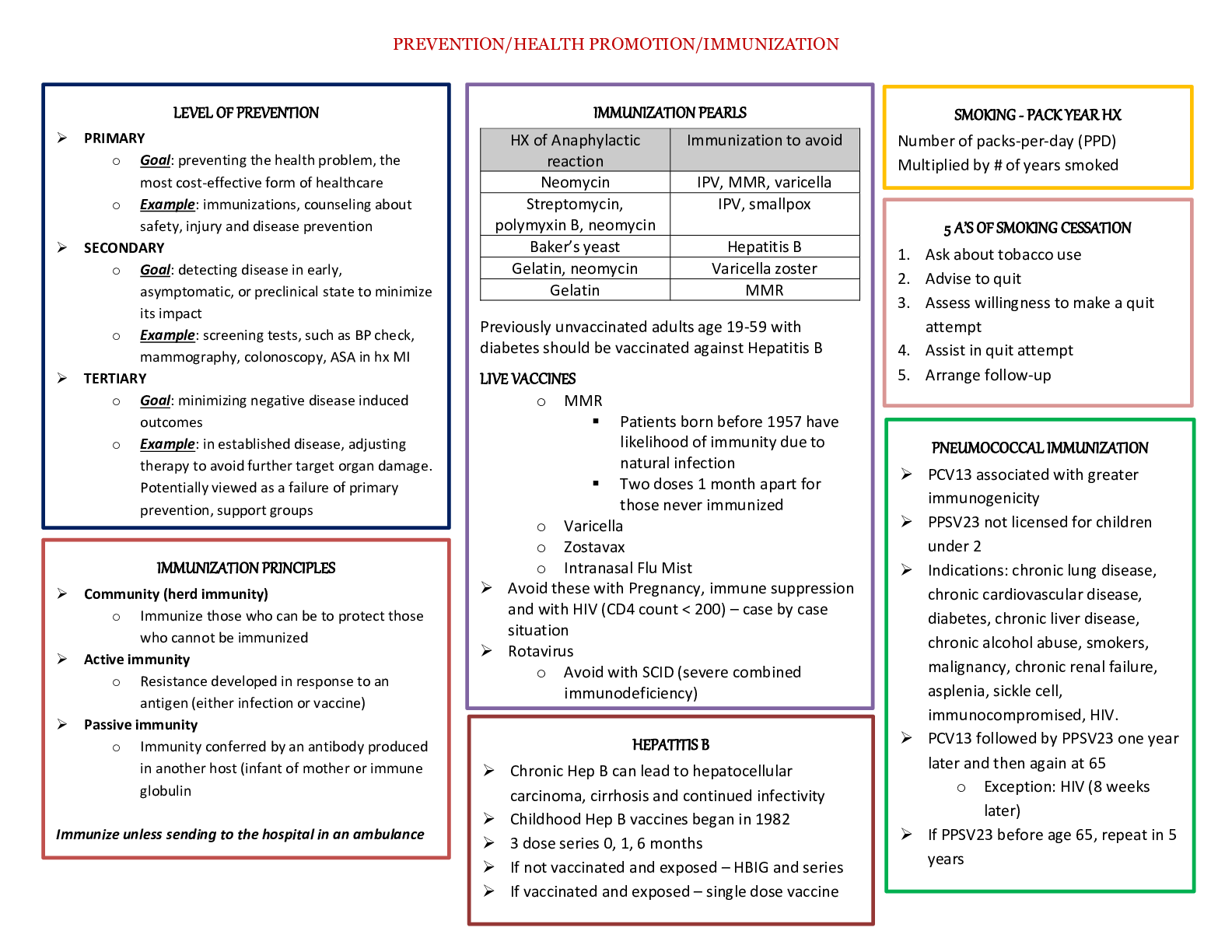
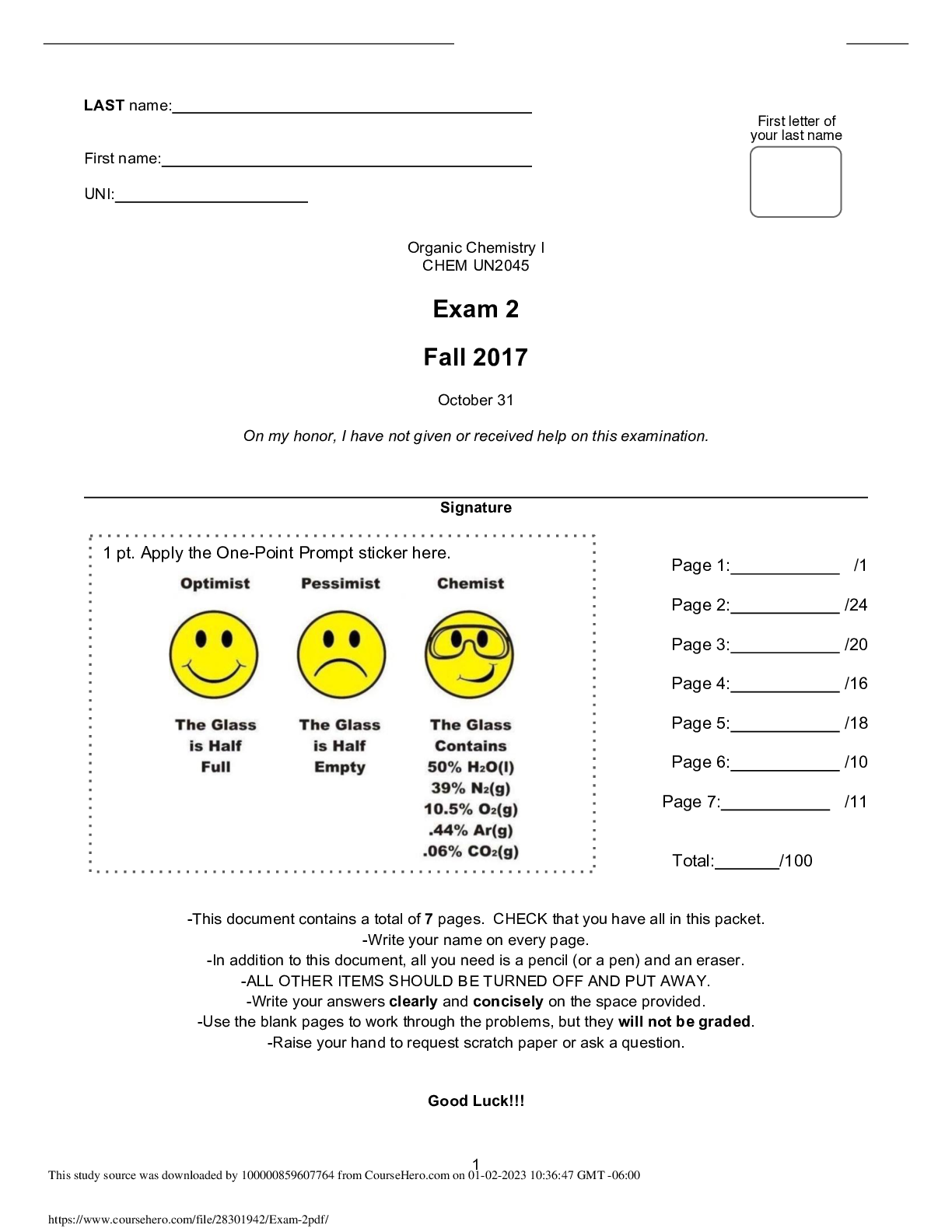

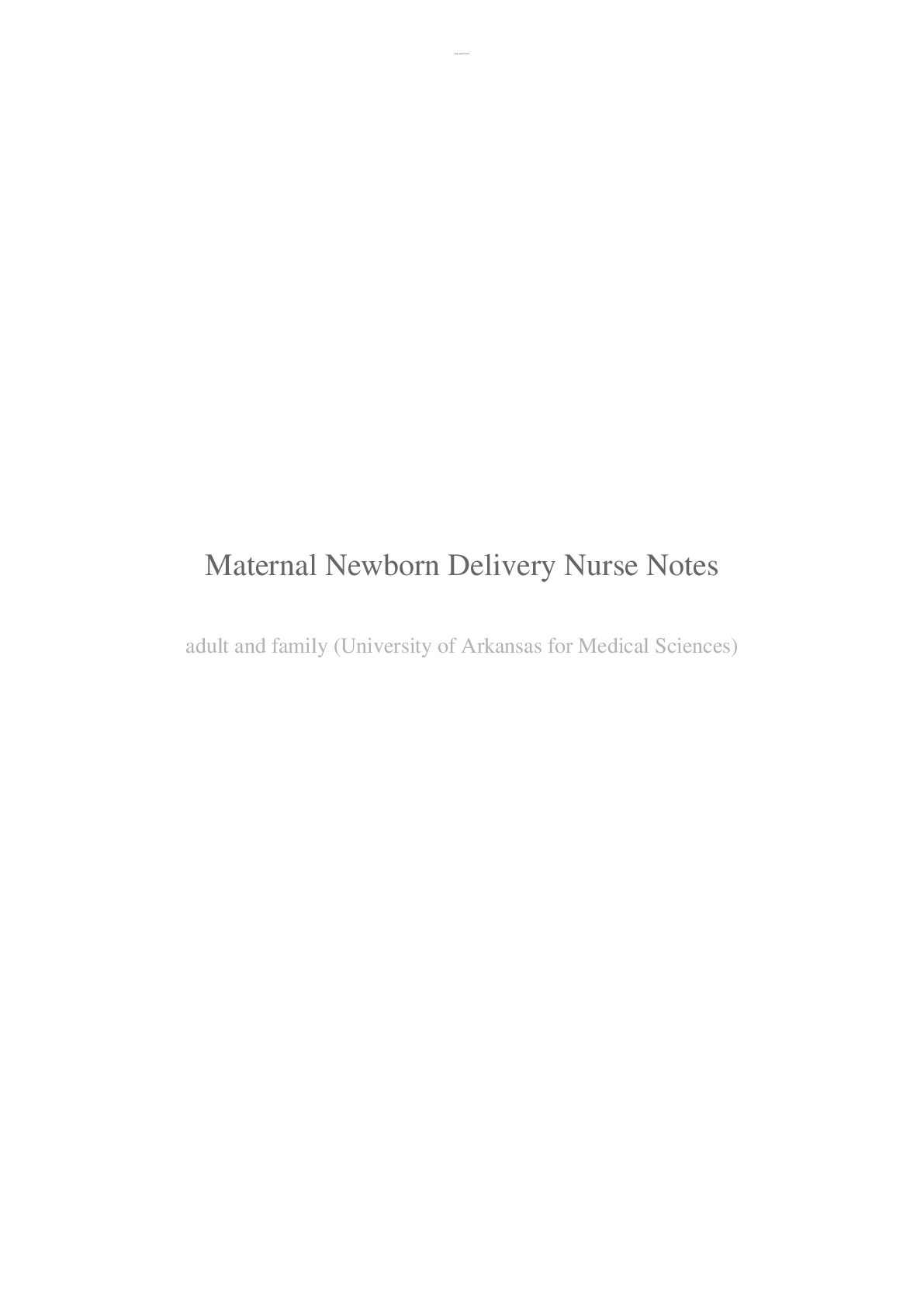


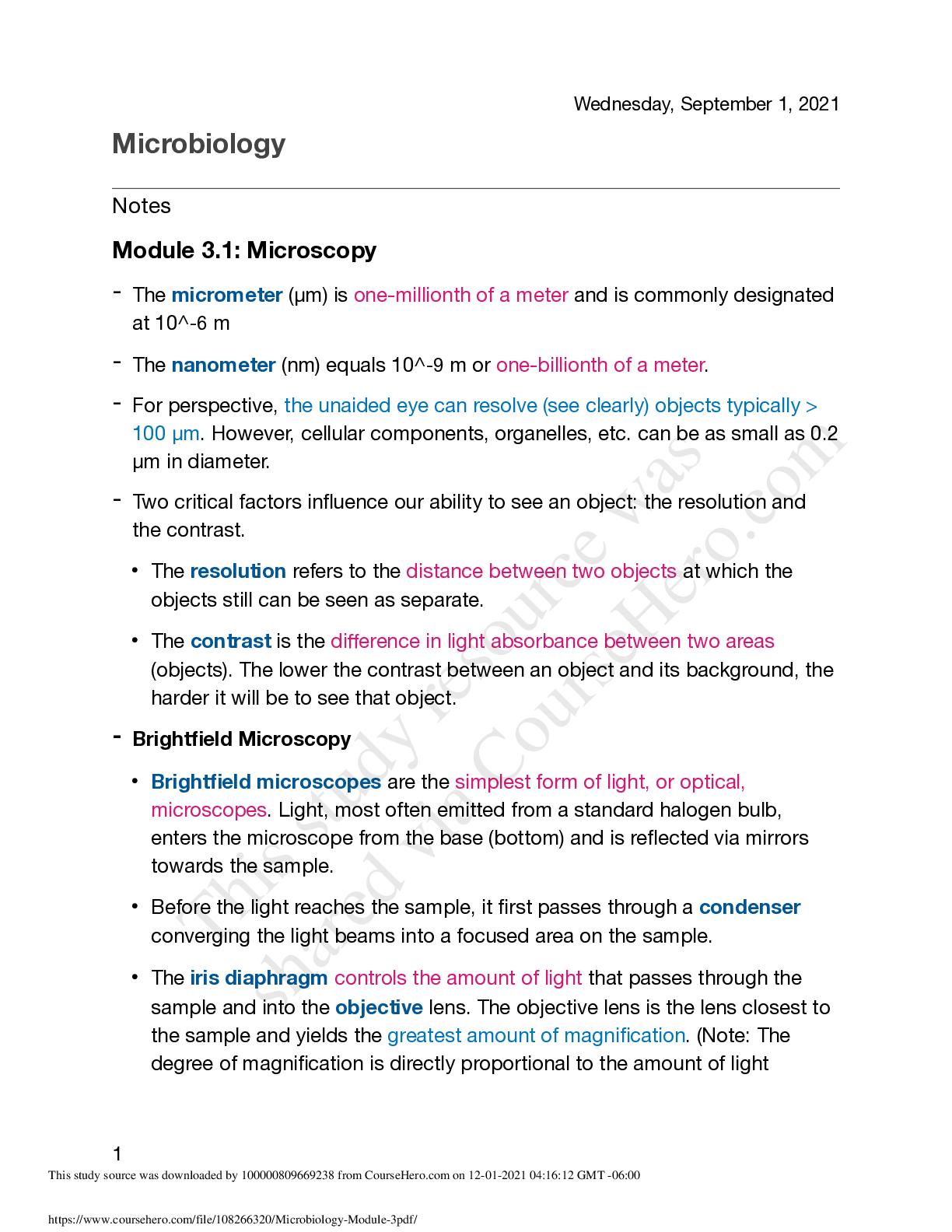



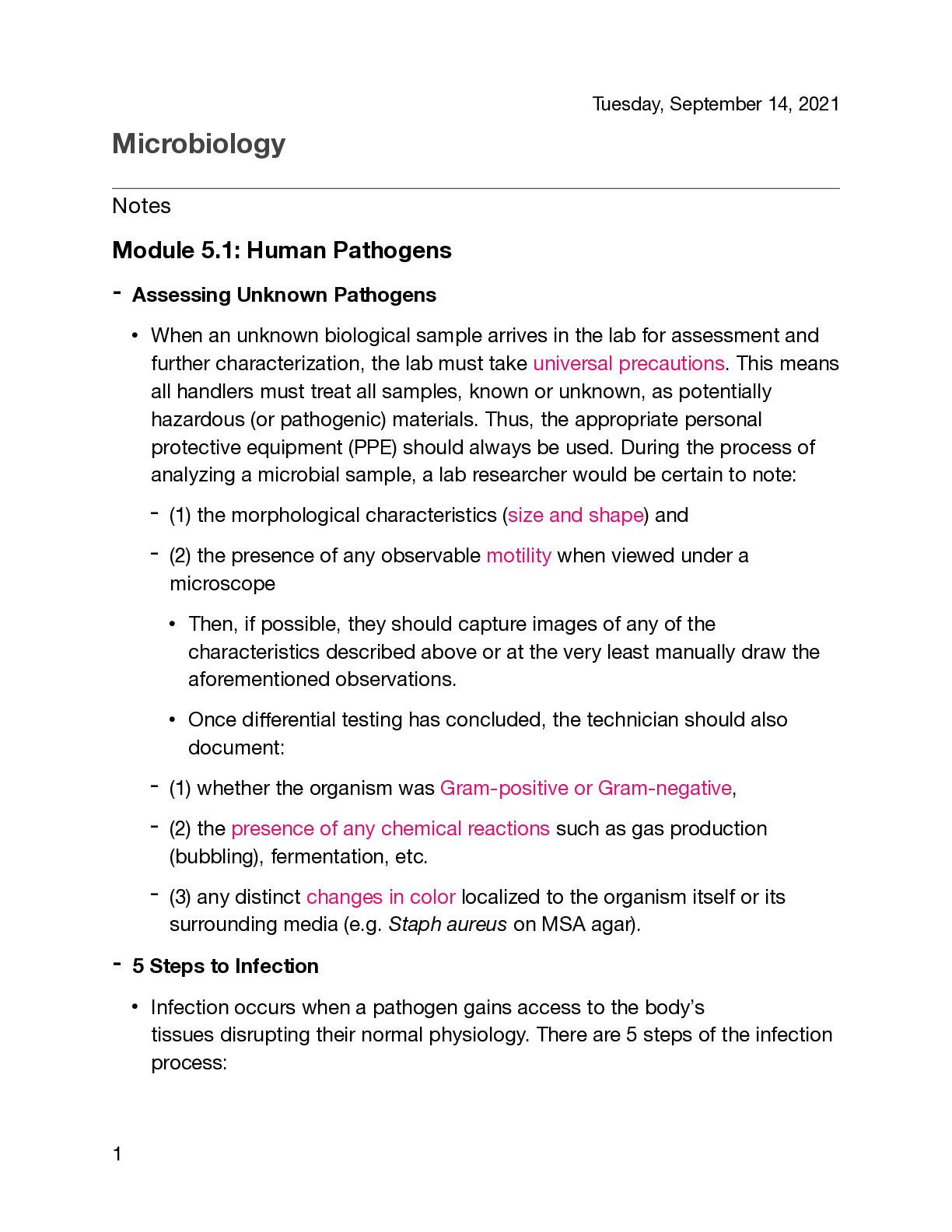
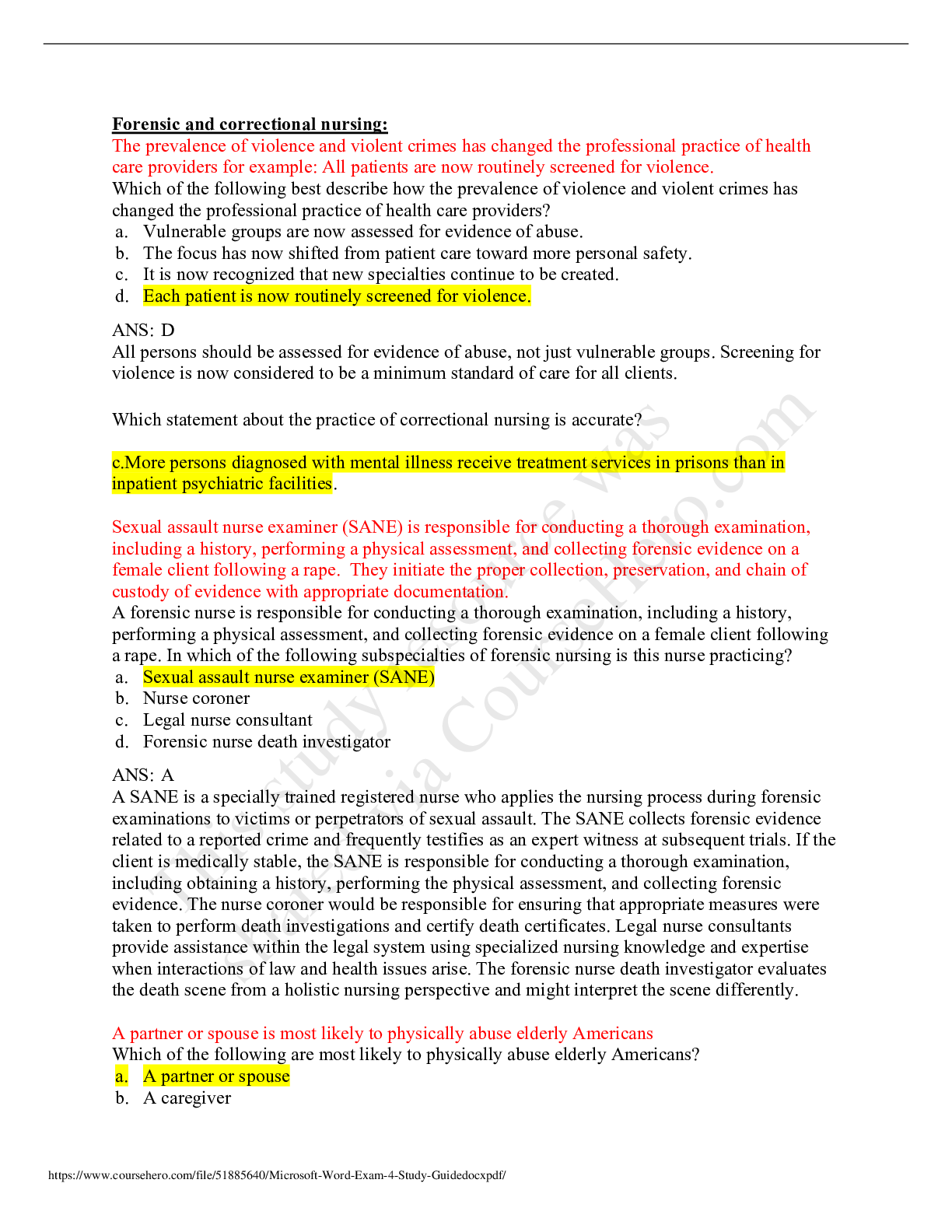

.png)


